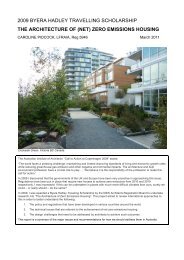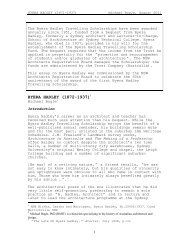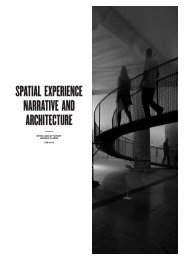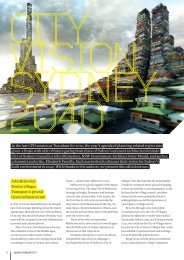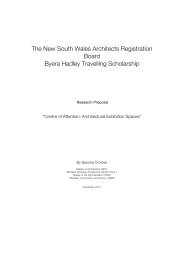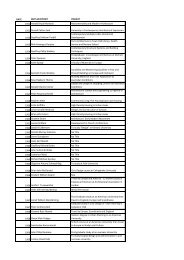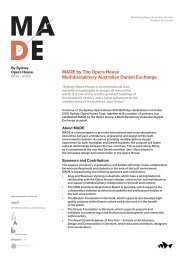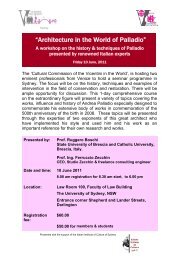4 unités LC - Architecture Insights
4 unités LC - Architecture Insights
4 unités LC - Architecture Insights
You also want an ePaper? Increase the reach of your titles
YUMPU automatically turns print PDFs into web optimized ePapers that Google loves.
II.1 History<br />
Development of the design for the ‘Unité’ in Rezé began during the<br />
construction of the one in Marseille, and due to the controversy<br />
surrounding its Marseillaise prototype, the ‘Unité’ in Rezé<br />
experienced criticism of its own. The construction of the first such<br />
building was already an outrage to many, so the repetition of an<br />
such an apparently evident mistake (as it was considered by some),<br />
would seem most unfortunate –<br />
“…not having been able to avoid the realisation of the ‘Cité<br />
Radieuse’ [in Marseille], it is hoped at least that this dreadful<br />
precedent will not be repeated, especially in Nantes, where such<br />
an occurrence is already in question.” 3<br />
The circumstances for the ‘ Unité’ of Rezé were quite different,<br />
however, as here Le Corbusier was in fact approached by a cooperative<br />
of local workers and commissioned for its construction.<br />
The finances for the project were supplied in part by the regional<br />
government housing association, and supplimented by the<br />
building’s future occupants. 4 But the budget was still far less than<br />
that of Marseille’s ‘Unité’, and as a result, several compromises<br />
were required in size, materials and common facilities.<br />
The width of the building in Rezé was reduced by 5m in comparison<br />
to the one in Marseille, the reduction in width consequently<br />
resulting in the reduction of apartment length. This limiting of<br />
space eliminated the possibility of a double height living area,<br />
leaving the apartments of the building in Rezé seeming less<br />
spacious than those of the building in Marseille.<br />
137 138<br />
77. The concrete facade at<br />
the base of the ‘Unité’ in Rezé<br />
pictured just after the building’s<br />
opening. A view that is much<br />
the same today.<br />
Another compromise was made in the simplification of the<br />
building’s structure and sound isolation techniques. In Rezé, the<br />
reinforced concrete frame structure used in Marseille as a ‘bottlerack’<br />
was neglected. Here, Le Corbusier used what he described as<br />
a system of ‘shoe boxes’ 5 – each apartment still complying with his<br />
principles of independence, but in this case separated only by<br />
bands of lead running between each ‘box’ to prevent direct contact<br />
and thus reduce sound transmission between adjacent apartments.<br />
The sound isolation, although still far better than that of the





